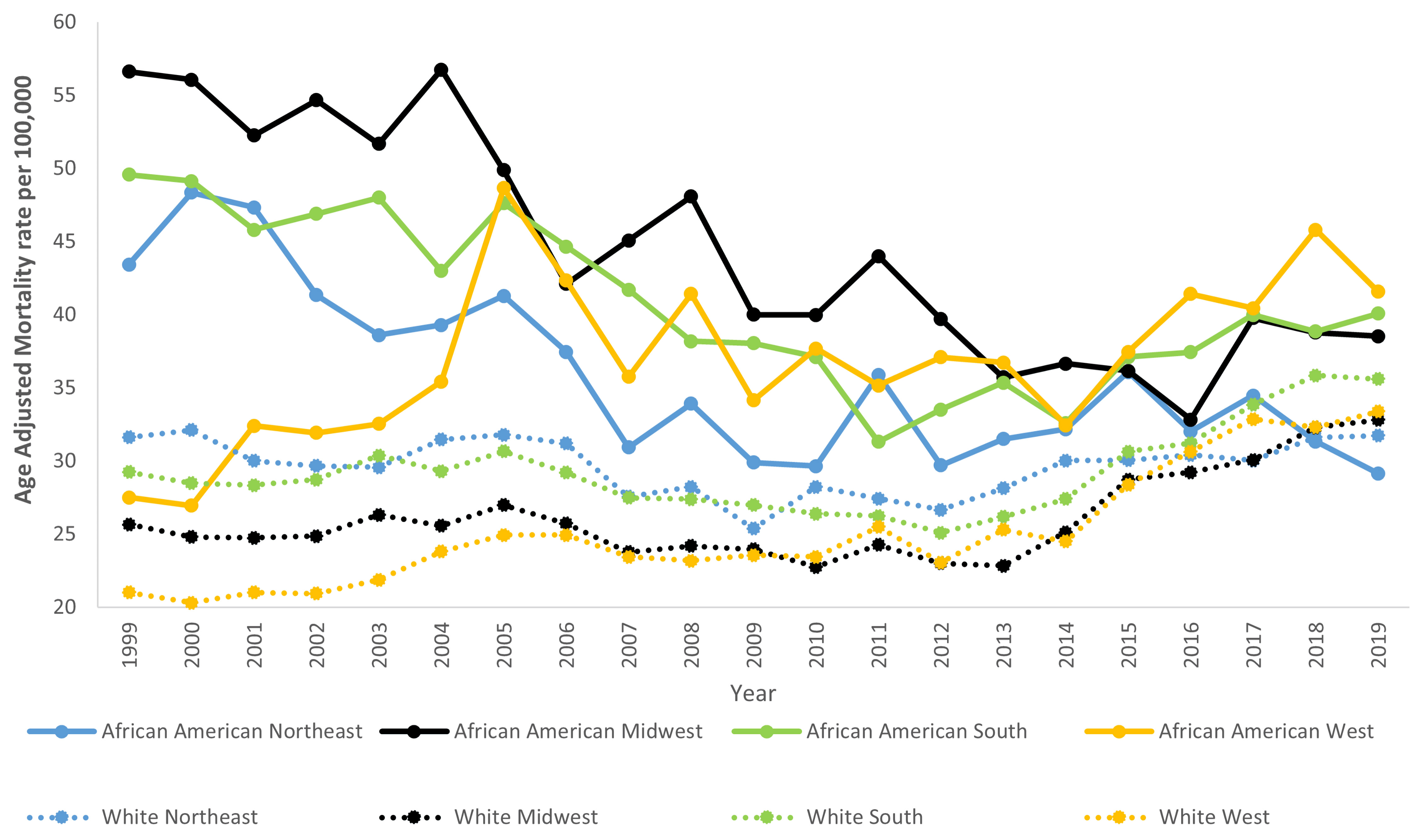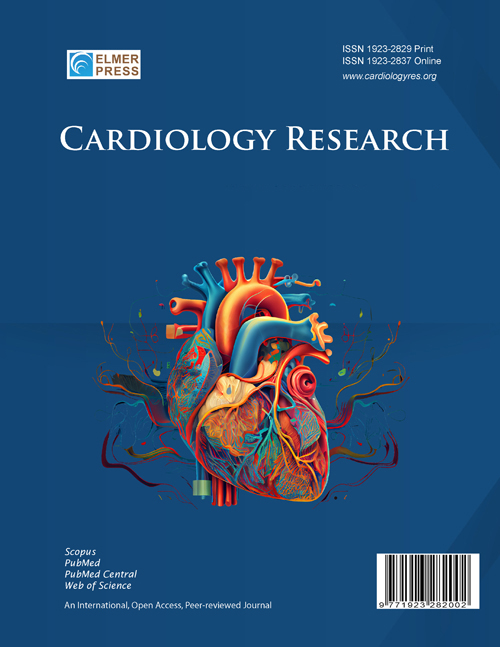Heart Failure and Sepsis-Related Mortality Trends in the United States, 1999 - 2019: An Analysis of Gender, Race/Ethnicity, and Regional Disparities
DOI:
https://doi.org/10.14740/cr1749Keywords:
Heart failure, Sepsis, Mortality trendsAbstract
Background: Heart failure (HF) and sepsis are significant causes of disease burden and mortality among the elderly population of the USA. HF causes fluid overload, which complicates the treatment approach when patients develop sepsis necessitating fluid resuscitation. While individual disease states have been studied extensively, the trends in mortality for concurrent sepsis and HF are not well known.
Methods: Mortality trends due to sepsis and HF in individuals aged 65 and older in the USA from 1999 to 2019 were analyzed using the Centers for Disease Control and Prevention Wide-ranging Online Data for Epidemiologic Research (CDC WONDER) database. Differences in age-adjusted mortality rate (AAMR) and average annual percent change (AAPC) over the past two decades based on gender, race, region, and place of death were examined.
Results: Between 1999 and 2019, there were a total of 5,887,799 deaths related to HF, 2,584,523 deaths related to sepsis, and 250,115 deaths related to both HF and sepsis. There was also a decrease in AAMR for HF-related (AAPC -0.80%) and sepsis-related (AAPC -0.28) deaths but an increase in combined HF and sepsis-related AAMR (AAPC 1.06%). Men had consistently higher AAMRs compared to women and a greater increase in mortality (AAPC in men 1.53% vs. women 0.56%). African American patients had a higher AAMR than White patients throughout the study period, though the difference narrowed. African Americans saw a decrease in overall HF and sepsis-related AAMR from 48.90 to 40.56 (AAPC -0.83), whereas AAMR for the White population increased from 27.26 to 33.81 (AAPC 1.37). Regionally, the Northeast had the highest AAMR in 1999 (32.32) but decreased to the lowest AAMR by 2019 (30.77). Totally, 203,368 (81.31%) of all deaths related to HF and sepsis were in medical facilities, 18,430 (7.37%) were in home/hospice facilities, and 24,713 (9.88%) in nursing homes.
Conclusions: HF and sepsis-related mortality in the elderly population increased over the past two decades, with men and African Americans at disproportionately higher risk.

Downloads
Published
Issue
Section
License
Copyright (c) 2024 The authors

This work is licensed under a Creative Commons Attribution-NonCommercial 4.0 International License.










